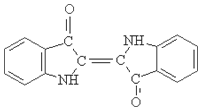Affordable natural indigo dye for beautiful and sustainable color creations.
Indigo, a natural dye with a rich history and vibrant hue, has long been treasured for its beautiful color and versatility. From clothing to home décor, indigo has been a beloved dye for centuries across various cultures.
One of the most appealing aspects of indigo is its affordability. In comparison to other natural dyes, indigo is relatively cheap to produce, making it a popular choice for those looking to add a pop of color to their wardrobe or living space without breaking the bank.
Indigo, a natural dye with a rich history and vibrant hue, has long been treasured for its beautiful color and versatility
. From clothing to home décor, indigo has been a beloved dye for centuries across various cultures.One of the most well-known uses of indigo is in traditional Japanese textiles, such as the famous indigo-dyed fabrics known as aizome. These fabrics are dyed using a technique called shibori, where the fabric is manipulated and bound in various ways to create beautiful patterns and designs. The result is a stunning array of deep blues and rich indigos that have become synonymous with Japanese craftsmanship.
cheap indigo natural color

In addition to textiles, indigo is also widely used in home décor items such as pillows, throws, and rugs. The natural hue of indigo adds a touch of elegance and sophistication to any space, whether it be a rustic farmhouse or a modern apartment. The versatility of indigo also allows it to be easily paired with other colors and materials, making it a popular choice for interior designers and homeowners alike.
Indigo dye is not only affordable, but it is also environmentally friendly. Unlike synthetic dyes, which can be harmful to the environment and human health, indigo dye is biodegradable and non-toxic. This makes it a sustainable choice for those looking to reduce their environmental impact while still enjoying the beauty of natural dye.
Overall, indigo is a versatile and affordable natural dye that has stood the test of time. Its rich history and vibrant color make it a popular choice for a wide range of applications, from clothing to home décor. Whether you are a seasoned crafter or a novice DIY-er, indigo is a wonderful option for adding a touch of color and charm to your creations.
-
Thermal Stability Analysis of Bromo Indigo Pigments
NewsJun.06,2025
-
Sulphur Black Dye Oxidation Process Optimization
NewsJun.06,2025
-
Lightfastness Testing of Bromo Indigo Dyed Denim
NewsJun.06,2025
-
Granule Size Distribution and Jeans Color Uniformity
NewsJun.06,2025
-
Gradient Dyeing Methods with Indigo Blue Granules
NewsJun.06,2025
-
Dyeing Temperature Effects on Sulphur Black Color Fastness
NewsJun.06,2025
-
Sulphur Black Dyes in Daily Use
NewsMay.07,2025

Sulphur Black
1.Name: sulphur black; Sulfur Black; Sulphur Black 1;
2.Structure formula:
3.Molecule formula: C6H4N2O5
4.CAS No.: 1326-82-5
5.HS code: 32041911
6.Product specification:Appearance:black phosphorus flakes; black liquid

Bromo Indigo; Vat Bromo-Indigo; C.I.Vat Blue 5
1.Name: Bromo indigo; Vat bromo-indigo; C.I.Vat blue 5;
2.Structure formula:
3.Molecule formula: C16H6Br4N2O2
4.CAS No.: 2475-31-2
5.HS code: 3204151000 6.Major usage and instruction: Be mainly used to dye cotton fabrics.

Indigo Blue Vat Blue
1.Name: indigo blue,vat blue 1,
2.Structure formula:
3.Molecule formula: C16H10N2O2
4.. CAS No.: 482-89-3
5.Molecule weight: 262.62
6.HS code: 3204151000
7.Major usage and instruction: Be mainly used to dye cotton fabrics.

